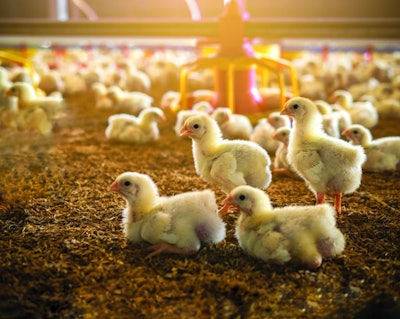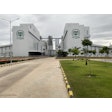
2023 Poultry Outlook highlights the macro issues impacting the global poultry industry and influencing its feed production
As slowing global economies and high inflation rates impact markets worldwide, the global poultry industry prepares to weather the headwinds caused by the ongoing devastating effects of highly pathogenic avian influenza (HPAI) and record-high input costs.
In Feed Strategy’s annual Poultry Outlook report, poultry and feed industry experts were tapped to provide insight into the hot topics set to shape poultry meat, egg and feed production in the next 12 months.
HPAI remains top concern
The global impact of highly pathogenic avian influenza, or HPAI (H5N1), a highly contagious poultry virus that results in high mortality, is expected to continue to affect the poultry industry in 2023.
HPAI has challenged nearly all major poultry markets worldwide, resulting in the mass depopulation of flocks in numbers “eclipsing” the previous highs reported during the 2014-15 outbreak. For example, more than 52.3 million birds in 46 states — mostly chickens and turkeys on commercial farms — have been slaughtered as part of this year’s outbreak, according to the U.S. Department of Agriculture (USDA), and the European Food Safety Administration (EFSA) reports upwards of 48 million culled birds in the U.K. and Europe.
“We saw an abnormal resurgence of its impact on U.S. commercial flocks in the second half of the year,” says Brian Earnest, lead protein industry analyst, CoBank. “Turkey prices have skyrocketed, and export demand has softened, both sending mixed signals to producers, who will likely continue the HPAI battle again next year.”
John Metzger, Elanco’s senior director of global food industry engagement, also notes production drops in Japan, South Korea, Russia and Europe.
“Import restrictions have impacted export volumes from Europe (chicken and hatching eggs) and Russia (chicken), which is impacting supply in the Middle East and Africa,” he says. HPAI’s “presence in Europe is causing many countries to tighten mandatory housing and biosecurity requirements.”
Nan-Dirk Mulder, Rabobank’s global specialist for animal protein, points to the potential disruptions caused by HPAI as it moves into South America, with recent cases in Colombia, Peru and Ecuador.
“Worries are currently rising about the threat of the virus reaching Brazil’s key production areas in the South and Center West,” Mulder says. “If so, this could highly disrupt global markets given the world’s dependence on Brazil.”
As the impaired supply chain fights to keep up with demand, consumers will continue to see high prices for poultry products. For example, laying hens lost has resulted in an absence of 2 million dozen eggs in the market, notes Dr. Austin Jasek, poultry account manager, Zinpro.
HPAI will be also the major wild card for global trade.
“We think in general it will be strongly taken into account — tightening market conditions in world markets, market openings to curb global inflation, and ongoing high prices,” Mulder says. “On a local basis, supply discipline will be key to keep the market balanced.”
Production pressure aside, Hugo Romero, Novus International‘s executive manager for global poultry solutions, highlights the mental toll that results from the culling of entire flocks for those working at the poultry house and wonders how the situation could change.
“This virus evolves quickly; how will the next version behave in birds? Will a mutation of the current strain (H5N1) be able to spread more easily to people? What will that mean for poultry workers and end consumers?” he says.
Dr. Theresia Lavergne, Natural Biologics’ senior technical service manager, believes the reduction in the number of birds in 2022 will result in less production in 2023 as well.
The rising cost of production
Operational challenges – high and volatile feed, energy and transportation costs — will continue to tax poultry and poultry feed producers in the year ahead, Mulder notes.
“The cost to produce poultry has been increasing and is expected to continue to increase into 2023,” Lavergne says. “The costs of labor, fuel, utilities, medications, feed and feed additives, as well as costs associated with disease, all contribute to higher costs of production.”
Poultry and feed industry experts share their thoughts on the factors driving these price hikes:
- Feedstuffs: “Competing industries requiring feed ingredients, like biodiesel, geopolitical conflict and adverse agronomic conditions have been reducing yields of key feedstuffs and driving up the price of feed,” reports Jasek.
Mulder agrees: “Although we expect slightly bearish corn and soybean prices, they will still be high from a historic perspective and taken its ongoing stock levels in a context of slow Chinese demand, geopolitical changes and potential supply disruptions, prices will be volatile.”
The Russia-Ukraine war also adds a layer of uncertainty. - Energy: Energy prices are expected to remain volatile in 2023, with cost variations ranging by region.
“Given Europe’s historic dependence on Eastern Europe and the impact of sanctions, we can expect ongoing volatility, depending on potential new restrictions like the impact of the recently introduced price gap,” Mulder says. - Agricultural inputs: “The ongoing Russia-Ukraine conflict continues to impact global supplies, not only spiking energy prices, but fertilizers for which the market nearly fell apart during the third quarter of 2022, only to find renewed strength as buyers took note,” Earnest says. “Tightening global supplies, and ongoing geopolitical unrest suggest we should expect agricultural and energy commodities, including fertilizer, to remain under stress during 2023.”
- Labor: Labor costs in the context of price inflation and availability of workers — especially in Western markets — will be another major factor to watch, Mulder says.
- Transportation: “The ongoing shortage of truck drivers, looming rail workers’ strikes and diesel supply shortages will all likely combine for increased input costs for feed manufacturing,” Metzger says. “As a result, poultry producers may be wise to focus on feed milling fundamentals to reduce safety margins and avoid ingredient waste throughout the manufacturing process.”
Consumer behavior influenced by inflation
High inflation rates have hit consumers’ spending power, but the outlook for the demand for poultry meat and eggs remains strong.
“Protein demand in general has been strong, and is expected to remain elevated, suggesting that consumers will likely adapt their animal protein purchases amid higher prices to become more inclusive of poultry options,” Earnest says. “This also likely means we see stronger demand for ‘commodity’ poultry as consumers contrast premium costs against basic needs.”
Sales of premium chicken products, i.e. slow-growing chicken and organic concepts, will likely take a hit.
Poultry feed manufacturer, nutritionist concerns
Several themes emerged when asked about the challenges poultry nutritionists would face in the next 12 months. Here are the issues sources feel should be on the feed formulator’s radar:
- Availability of raw feed materials
Earnest believes the supply of major and minor feed components will remain imbalanced with the demand.
“As the U.S. market incorporates higher demand for vegetable oils from expanding biofuels initiatives, soybean crush capacity is growing, yet meal demand will likely not keep up, suggesting the potential for a ‘falling sword’ in the meal component of poultry feed,” he reports. “Recognizing this exposure will be critical as procurement teams navigate uncertainties in 2023.”
- Importance of feed additives
With high raw material costs, Romero acknowledges alternative ingredients can be the most cost-effective in rations, but cautions that when lower quality ingredients are used, nutritionists must know which additives can used to offset negative effects, e.g. using enzymes to improve the accessibility of nutrients and reduce antinutritional factors.
“Nutritionists should also be evaluating vitamins and minerals to ensure they are highly available in the animal – resulting in optimum absorption and less being excreted in the environment,” he says. “The right combination of scientifically backed enzymes, organic trace minerals and methionine can make a difference.”
- Focus on nutrients
“Feed manufacturers and nutritionists can prepare for the challenges in 2023 by reviewing nutrient specifications for each bird type and phase of production to ensure that dietary formulations are adequate for optimizing bird performance,” Lavergne says. “With increased costs of feed ingredients and additives, this is not a time to decrease nutrient specifications. Decreasing the nutrient specifications of diets might decrease the cost per ton of feed, but it can increase the overall cost of production by increasing the total amount of feed needed to meet weight targets, negatively affecting feed conversion ratio, or increasing the length of time birds are in the field.”
She emphasized the importance of starter diets, noting they “are not a place to cut costs.”
- Added emphasis on sustainability
As the poultry industry aims to reduce its environmental footprint, feed producers are constantly reviewing new additives and alternative ingredients to improve nutrient uptake in the gut to lead to increased feed conversion and, increasingly, to meet the producer’s sustainability goals, says Dr. Nathan Collins, poultry technical nutritionist, Elanco.
Romero notes an uptick in the requests for life cycle assessment (LCA) information for feed additives, highlighting a shift in the depth of information the public wants to know regarding the environmental impact of poultry products.
“It’s only a matter of time before regulators make certain production information mandatory as part of doing business,” Romero believes. “Now is the time for poultry producers to begin collecting information on everything going into their birds and showcasing pertinent sustainability details.”
Jasek suggests “keeping an open mind and a strong voice with good data to show efficiency improvements is imperative to continuing to build our sustainability story as an industry.”
Sidebar
‘Right sizing’ poultry supply amid fluctuating demand
“Broiler meat production accelerated during the fourth quarter and, as a result, markets were oversupplied. Beef output is projected down roughly 7% in 2023, suggesting a significant market opportunity for poultry, but the reductions will likely be less present through the first six months, which could result in protein market saturation and keep pressure on chicken prices through the first six months of 2023.” — Brian Earnest, lead protein industry analyst, CoBank
Sidebar
Innovative ways to support NAE production
“As consumer demand drives more of the poultry industry towards a “no antibiotics ever” (NAE) label, more than half of U.S. broilers are raised without ionophore usage. Effective vector and disease management becomes crucial to ensure safety and animal welfare in these operations, with producers searching for new solutions. … There are non-antibiotic tools and resources that can be implemented to help support gut health. The three primary non-antibiotic product types available are weak chemicals, strong chemicals and vaccines.” — Dr. Nathan Collins, poultry technical nutritionist, Elanco

















